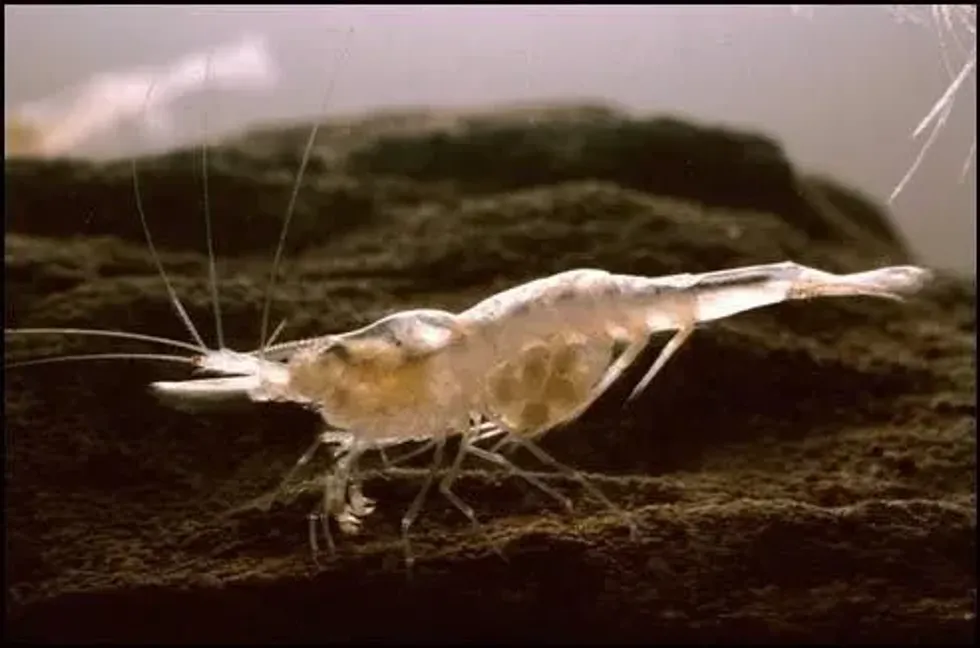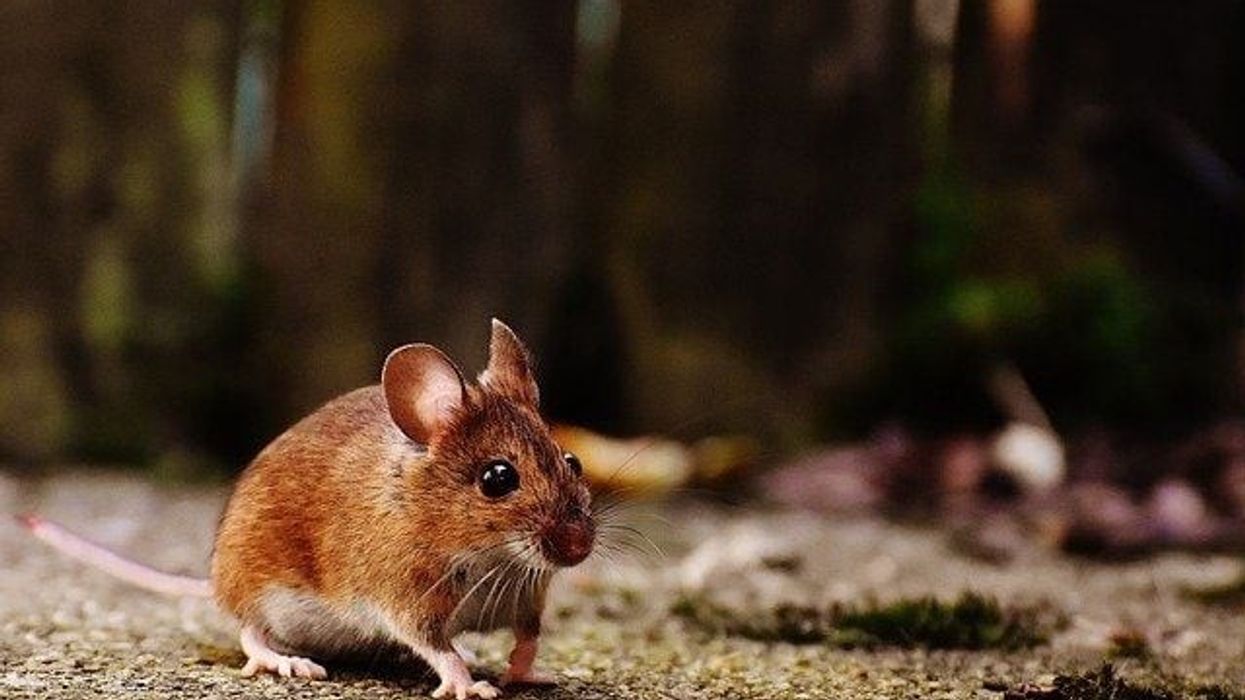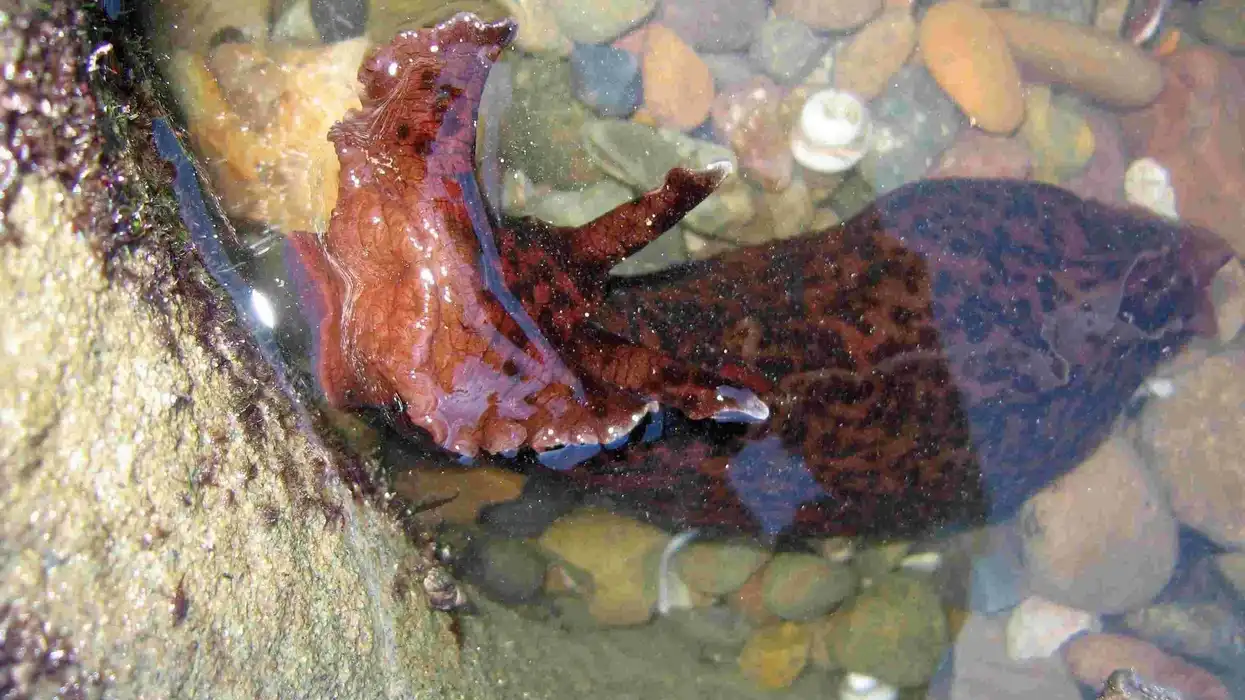The Kentucky cave shrimp, the same species as the Alabama cave shrimp, is an endangered species of shrimp that are only found in Kentucky and Alabama. This species of cave shrimp is very different from the aquatic shrimp that we see today.
Their distribution is restricted to only a specific region. These shrimp live in a cave or what's known as a mammoth cave. They are found in only two caves across the world and that is one of the reasons why their population is threatened.
When we talk about the populations of this species, it's pretty essential to look at the cave systems on which they rely heavily. In the case of the cave shrimp, Palaemonias ganteri, their population is heavily affected by groundwater contamination.
According to the U.S fish and wildlife community, the reproduction rate of these cave shrimp has declined significantly due to poor water quality in underground streams.
Pollution and lack of ecological balance and management in their caves is one of the reasons why their population is still in the recovery phase.
Despite this situation, there have been plenty of recovery plans and the government of North America has various national and federal level groups dedicated to supporting and bringing back the natural cave environment for the species P ganteri.
To learn more about other amazing animals, make sure to check out our articles on shrimp and mantis shrimp.
Cave Shrimp Interesting Facts
What type of animal are cave shrimps?
The cave shrimp, Palaemonias alabamae, is a species of shrimps that are very different from the other shrimps. These cave shrimp are transparent. They are from crustacean Alabama and they almost have no pigment in their body.
What class of animal do cave shrimps belong to?
The cave shrimp, Palaemonias alabamae, is from the Malacostraca class of which there are only two species and both of them are endangered. They are also related to the squirrel chimney cave shrimp.
Various recovery plans for protecting this species are still under development. They will be designed to heal the cave systems and bring them to better natural and environmental conditions, reducing groundwater contamination.
How many cave shrimps are there in the world?
The Kentucky cave shrimp and Alabama cave shrimp are the only two living species of cave shrimp in the cave system of North America. The correct number of their population is still not known however they are present in very small numbers.
Where do cave shrimps live?
As the name suggests both Kentucky cave shrimp and Alabama cave shrimp live in only these two places. Earlier a lot of these shrimp were present in the cave systems of mammoth caves and caves on the land of madison county. Their habitat is entirely located in the underground streams in the caves of Atlanta.
What is a cave shrimp's habitat?
Are cave shrimp blind? Yes, this is a very well-known fact about these shrimp.
Not only are these cave shrimp, Palaemonias alabamae, blind, but they are also very slow. Their natural habitat is in underground streams. This endangered species in the cave system prefers to live in sandy bottoms, where they can find nutritious food, dead pools, and shallow raffles.
Who do cave shrimps live with?
The Kentucky cave shrimp is known to be very shy and their designated habitat is known to be at the very bottom of caves. The same can be seen with shrimp in bobcat and mammoth caves.
Thus, it can be very difficult to understand their living groups from the surface, nonetheless, they live with hoary bats and tangle web spiders.
How long do cave shrimps live?
The lifespan of both the Kentucky cave shrimp and Alabama cave shrimp is not known. These shrimps feed on organic matter and live very deep in the cave.
It's assumed that they have a very long lifespan as they have only three known species, including the squirrel chimney cave shrimp. Thus, it could be said that the Alabama cave shrimp does have a very long lifespan.
How do they reproduce?
The reproduction process of Kentucky cave shrimp has been highly affected due to environmental and groundwater contamination in their caves. This same issue also affected shrimps that lived in the mammoth cave and bobcat caves.
The female can lay eggs at any anytime, though most times they lay them during spring. A female Alabama cave shrimp can carry 33 to 40 eggs until they are ready to hatch, which generally happens during late summer or fall.
No parental care is provided to newborn hatchlings. A large set of their population has started laying very few eggs due to constant contamination in the cave system that leads to poor water quality.
What is their conservation status?
A lot of plans are under development to help balance ecological and natural aspects of the current day cave system. Due to groundwater contamination in caves such as bobcat and glover, the shrimp population in those caves is also threatened.
Nonetheless, this species of Alabama cave shrimp is considered to be an Endangered species, their conservation status is Endangered. A lot of federal and national recovery plans are in place for the management of water quality and underwater pools.
Cave Shrimp Fun Facts
What do cave shrimps look like?
A very distinguishing feature of Alabama cave shrimp is that they are transparent. They do not have any eye development and for that matter, they are almost blind completely. The same can also be said about the squirrel chimney cave shrimp. Their anatomy systems are very different from other shrimp; they have fewer dorsal spines and a shorter rostrum.
How cute are they?
The squirrel chimney cave shrimp is extremely adorable and are some of the most adorable species of both land and cave shrimps. Despite their cuteness, they are facing multiple threats due to groundwater contamination and pollution.
How do they communicate?
They can communicate in their region by making vocal sounds.
How big are cave shrimps?
An Alabama cave shrimp is almost the same size as a mantis shrimp. They are a little smaller than a red bat.
How fast can cave shrimps move?
Cave shrimps are known to be slow runners, mostly they don't move that much at all.
How much do cave shrimps weigh?
A cave shrimp weighs around 1-2 lb (0.4-0.9 kg).
What are the male and female names of the species?
Both male and female shrimps have the same name.
What would you call baby cave shrimps?
A baby shrimp is called a clutch or hatchling.
What do they eat?
All shrimps residing in caves eat and survive on organic food matter such as Protozoans, insects, and algae.
Are they dangerous?
No, they are not dangerous in any way at all.
Would they make a good pet?
Their conservation status is Endangered, thus it's not ideal to bring home such a species that needs protection by the state. They also reside deep down in protecting waters so establishing similar environmental conditions to keep them as a pet would be difficult if not impossible.
Did you know...
These cave shrimps are often preyed upon by cavefish.
Types of cave shrimps
Alabama cave shrimp, Kentucky cave shrimp, and squirrel chimney cave shrimp.
Why are cave shrimps endangered?
They are endangered due to pollution inside the cave system, such as contaminated water.
Here at Kidadl, we have carefully created lots of interesting family-friendly animal facts for everyone to discover! Learn more about some other arthropods from our peacock mantis shrimp facts and white shrimp facts for kids.
You can even occupy yourself at home by coloring in one of our free printable cave shrimp coloring pages.
Main image by U.S. Fish and Wildlife Service Headquarters.
Second image by Pavel Kirillov.








